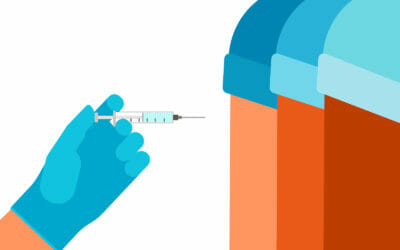There’s a lot of buzz in the media and boardroom about the effect of a good (or bad) night’s sleep on employee productivity—but what people eat to keep them fueled through the workday is making some impact of its own. The Huffington Post article Healthy Eating, Exercise Linked With Workplace Productivity referenced a study from the journal Population Health Management showing that eating unhealthily is linked with a 66% increased risk of loss of productivity. What’s more, employees who rarely eat fruits, vegetables and other low-fat foods at work were 93% more likely to have a higher loss in productivity; and those who didn’t believe their workplace would support them in becoming healthier were more likely to have a drop in productivity.
Making the connection between what you eat and how you perform on the job may not be too much of a stretch (most people have experienced that post-donut sluggishness), those statistics shed a bright light on just how big of a difference your food choices can make on your work. Here’s some food for thought to help you make the most of your workday meals and snacks:
Know the Risks
There’s no denying that what you eat influences your brain chemistry and affects your thinking. Poor dietary habits can reduce your concentration and problem-solving skills, things you need to do your job effectively. The UCLA Health System reports that poor dietary habits can also lead to increased fatigue, increased irritability, and higher levels of stress and depression. The risks are two-fold if you have a physical job for which you need to keep your muscles strong and body energized.
Make Healthy Choices
As tempting as the vending machine or fast food selections might be, you have healthier alternatives—like a brown-bagged lunch. Before you head to the grocery store, get familiar with the basics. Here are guidelines from Healthfinder.gov:
Eating healthy means getting plenty of:
- Vegetables, fruits, whole grains, and fat-free or low-fat milk products
- Seafood, lean meat and poultry, eggs, beans, peas, seeds, and nuts
It also means limiting:
- Cholesterol, sodium (salt), and added sugars
- Trans fats, which are found in foods like cakes, cookies, stick margarines, and fried foods
- Saturated fats, which come from animal products like cheese, fatty meats, whole milk, and butter
- Refined grains such as white bread, noodles, white rice, and flour tortillas
Pack Your Lunch
Some easy ideas for healthy and affordable meals you can make at home and bring to work:
- Peanut butter and “all fruit” jelly on whole grain bread
- Tuna or chicken salad with low-fat mayo, onions, and celery in a whole wheat pita
- Sandwich with lean meats like turkey and chicken, low-fat cheeses, and mustard, stacked on whole wheat bread and topped with fresh veggies like lettuce, tomatoes, onions, and peppers.
- Cold whole-wheat pasta salad with broccoli, halved cherry tomatoes, red onions, ham, olive oil, and Italian seasoning
- Chicken noodle soup loaded with veggies
- Turkey chili garnished with chopped onion and 2% cheddar cheese
- Three-bean pasta salad
- Leftovers from last night’s (healthy) dinner!
And don’t forget snacks:
- Sliced apple with peanut butter
- Baby carrots and hummus
- Low-fat cheese stick and grapes
- Low-fat yogurt with berries
- Handful of almonds and a banana
Learn more!
- UCLA Health’s How nutrition and exercise can increase productivity and lower health care costs
- WebMD’s Brain Foods That Help You Concentrate
- ChooseMyPlate.gov
- Healthfinder.gov’s Nutrition and Physical Activity
- Recipe ideas at Eatingwell.com
We thank The Huffington Post for Sharing information on Healthy Eating and Productivity.



